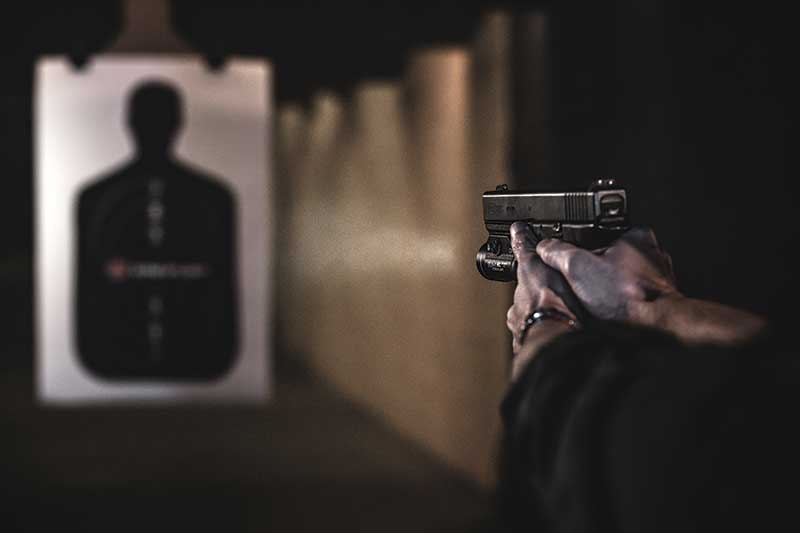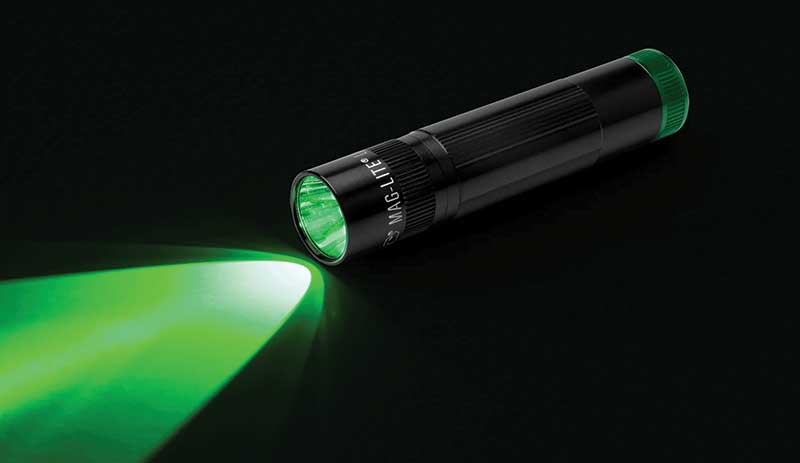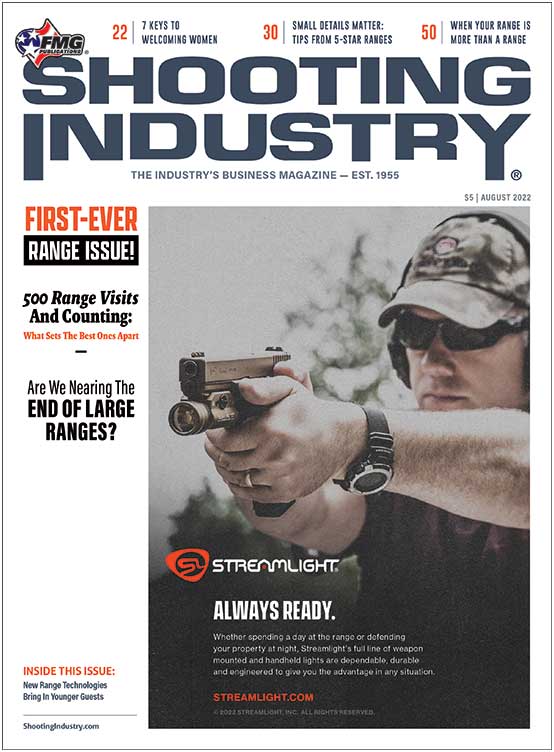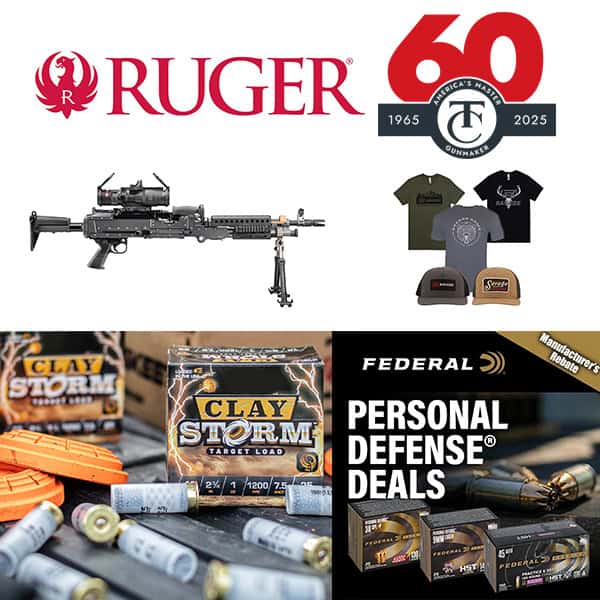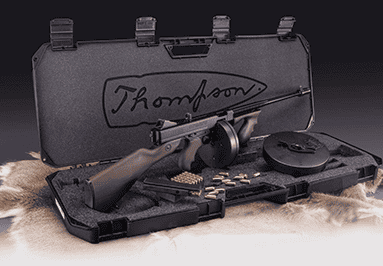Leading Your Customers To The Light(s)
Personal illumination devices have probably advanced faster than firearms in terms of “lighter, handier and less bulk with more power.” Have your customers kept up?
Just the casual question, “What are you carrying for a flashlight these days?” can be the starting point of a sale. An amazing number of people, including a lot who carry a concealed handgun daily, would have to go to their car, desk or, heck, back home to find a flashlight.
Daily carry of a flashlight is at the least a huge convenience and at worst — a life-saver. In the latter vein, I still remember one of my students from about 20 years ago. He had just about become the SureFire poster child, and with good reason. He was a survivor of the Twin Towers on 9/11, and the horror was still fresh in his mind from the living hell he and others had endured going down what seemed like endless pitch-black stairwells by feel after the power went out. He had been lucky, one of the last ones out before his tower collapsed. He swore to never again be without one or more powerful flashlights on his physical person.
For the average man or woman, even if they never experience a disaster, the everyday carry (EDC) flashlight is one of the handiest accoutrements. Most of us who carry them find use for them almost daily. A pen rolls under the desk. Individuals find themselves in darkened public restrooms and have to search for the light switch. We need to find something in the very back of the safe. The list of uses is almost endless.
And if the above isn’t enough …
Gently Neutralizing Poor Excuses
The customer might say, “I don’t need one, I have a light on my phone.” Yes, I understand. So do I. In fact, my iPhone has become my second flashlight. It’s strictly backup, though, for finding a keyhole for the key in poor light or some other situation where I only need a little bit of light, and only at short range. It’s not going to temporarily blind an attacker in the dark, nor identify what’s in the hand of the man at the other end of the dark alley by the parking lot, nor help me make an accurate shot swiftly under poor lighting conditions.
Or you might get “I don’t need one; I have one on my pistol!” It’s true enough: Today’s weapon-mounted lights (WMLs) have reached a stage of compactness — and our holster-makers have created concealable rigs for them — all of which makes daily carry of a light-mounted pistol possible and even practical. However, this means one has to draw a gun to utilize the light.
Encourage the customer to think about that. I know of a friendship lost when a man showed the new dog in his pickup truck to a friendly sheriff’s deputy one night. Not really able to see the pupper, the deputy reflexively reached for the only light he had on his person: the department-issue Streamlight TLR-1 on his department-issue GLOCK, which was fully loaded. The two nearly came to blows when the gun/light was pointed at the dog. I don’t think a formal complaint was lodged with the sheriff’s office, but it apparently ended a friendship.
“Just the casual question, ‘What are you carrying for a flashlight these days?’ can be the starting point of a sale.”
The use of the WML for a non-deadly force situation can have horrible consequences. Remind any of your customers doing a search with a WML means pointing a lethal weapon at everything we look at! I remind my students it’s directly analogous to the slob hunter who scans for game through the telescopic sight of his deer rifle … and finds he has pointed a loaded gun at everyone in the woods by the time he sees them and identifies them as a “no-shoot.”
Most people who carry guns concealed don’t put lights on them; ditto most people who have guns at home for family protection.
In either case, separate illumination is critical for searching, and in poor light — where even a customer with 20/20 vision might be the equivalent of legally blind — it’s vitally important to have illumination to distinguish a deadly foe from a “no-shoot target.”
And of course, there’s the ever popular “I already have a very cool tactical light, thank you very much.” I get it. So do you. But it’s a perfect moment for you to segue into what you might have to offer that’s smaller, lighter and/or more powerful — and thus better suited to your customer’s needs. Which leads us to …
The Latest & Greatest
The old guy writing this column hung out with a lot of New York City cops back in the 1970s, and noticed even on day shift uniformed officers there were required to carry flashlights on duty. Why? Because the next minute could take them into a darkened building, and a daytime emergency could run long into dangerous night work.
The same can be true for the armed citizen. When the Maglite company brought out the pocket size Mini-Mag, it was a godsend, and when SureFire brought out the 6P I designed a horizontal carrier for it on the front of my belt; after all, it was only a flashlight, and there was no need to waste concealment space on it. The Mini-Mag was relegated to backup, and sat very comfortably and accessibly vertical next to a wallet in my hip pocket.
Time went on. Lights got smaller. For years my primary was a SureFire L1 Digital LumaMax clipped in a side pocket, backed up by a Mini-Mag. The iPhone’s light replaced the Mini-Mag for non-serious light work, and of late, the L1 has been supplanted with a Streamlight Wedge. It’s flatter, and being rechargeable instead of battery-powered, a bit lighter … and brighter. It sits very comfortably in the cell phone pocket of my trousers next to a spare pistol magazine.
Another trendy development is the green beam. Here’s what the Maglite folks have to say about their new MiniMag LED Pro: “Green is great for outdoors as animals, insects and fish typically do not react to seeing a green LED light source.
Visually, your eye responds better to green and blue color lighting. [It] protects your night vision and avoids eye strain typically associated with using white LEDs for an extended period of time. [A] great rescue light for both the professional rescuer, as well as the average consumer, green LED flashlights can be seen up to a mile away.”
He who controls the light need not fear the darkness. If Miss Manners didn’t say, “You can’t be too thin, too rich or have too many flashlights” … well, maybe she should have. Practicality and logic can convince your customers to agree.

